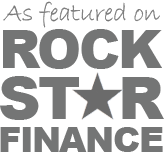Last weekend, my wife took some clothes out of our dryer and put a new load in. She pushed the button to start it and .... nothing happened. About 30 seconds later, it beeped and showed an error code:
Uh-oh. A little Googling told me this particular code means the main controller board is bad and needs to be replaced. The part typically costs $250 and that doesn't include the labor to install it. The total cost ended up being $398.
Luckily, I have been preparing for this contingency. As I posted last May, my budget includes putting some money away in an Appliance Replacement Fund. Unfortunately, that fund doesn't have enough yet to completely replace the washer and dryer (I'd want to replace them both at the same time), but it does have enough to cover the repair cost of the dryer. So a potential monthly budget busting event has been averted thanks to planning. Yay for budgets!
The dryer is 8 years old and, as I feared, its time appears to be reaching an end. Hopefully, the repair will buy me enough time to save up enough to replace both the washer and dryer. I'll probably need take a new look at my budget and make some changes though. I was contributing $100 a month towards this fund, but given the failure, I may try to bump that up a bit so that I can hit my goal sooner.
In Tesla-related news, I came across this video of people experiencing the acceleration of a Model S for the first time. I can't wait to experience it myself!
Uh-oh. A little Googling told me this particular code means the main controller board is bad and needs to be replaced. The part typically costs $250 and that doesn't include the labor to install it. The total cost ended up being $398.
Luckily, I have been preparing for this contingency. As I posted last May, my budget includes putting some money away in an Appliance Replacement Fund. Unfortunately, that fund doesn't have enough yet to completely replace the washer and dryer (I'd want to replace them both at the same time), but it does have enough to cover the repair cost of the dryer. So a potential monthly budget busting event has been averted thanks to planning. Yay for budgets!
The dryer is 8 years old and, as I feared, its time appears to be reaching an end. Hopefully, the repair will buy me enough time to save up enough to replace both the washer and dryer. I'll probably need take a new look at my budget and make some changes though. I was contributing $100 a month towards this fund, but given the failure, I may try to bump that up a bit so that I can hit my goal sooner.
In Tesla-related news, I came across this video of people experiencing the acceleration of a Model S for the first time. I can't wait to experience it myself!














